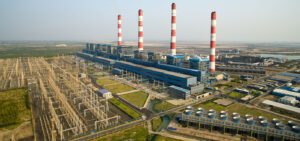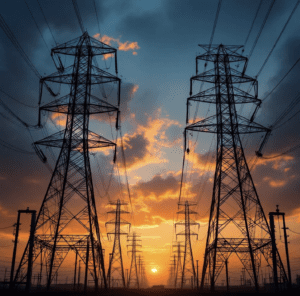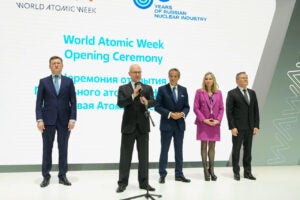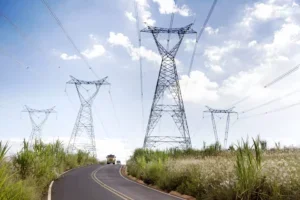It’s time to pull my crystal ball out of storage, polish it up, and give you another round of U.S. industry predictions for 2011. I graded last year’s predictions B+ (for a complete rundown of how I graded each prediction, see page 32), but I’m convinced I’ll do better in 2011.
10. Electricity Use Remains Flat. The Energy Information Administration reported in late November that electricity usage in 2009 declined 4.1% in the U.S. That’s the lowest usage since 2003 and the largest decline in six decades. The data say that 2010 will probably see an increase (about 4.7%) that returns usage to 2007 levels. I believe usage in 2011 will remain flat because the very slight blip in economic recovery produced by the stimulus spending has run its course, deferring the worst of the economic pain to 2011. See “The U.S. Power Industry 2011: The Sequel” (p. 22) for details of demand growth. 9. Wind Power Projects Are Becalmed. New wind projects in 2010 took a steep nosedive: Wind installations were down 72% from 2009, the lowest since 2006. The American Wind Energy Association blames “Factors [that] include lack of long-term U.S. energy policies, such as a [federal] Renewable Electricity Standard [RES].” State RES and federal and state tax credits are the engine that propels the wind industry, not market demand. The only hope of reviving the moribund wind market rests with the passage of a national RES, and that won’t happen in 2011. 8. New Plant Construction Is Mostly Gas. New plant installations in 2011 will continue to be largely fired by natural gas. Perhaps 8 GW to10 GW of new capacity will replace shuttered coal plants and “chase” nondispatchable renewable projects such as wind and solar. Keeping older coal plants running was important to many utilities when cap and trade was on the table because of the value of the promised allowances. Cap and trade is dead, so there is no reason to continue operating uneconomic coal plants. For HSB Solomon Associates’ view of the gas sector, see page 47. 7. Fracking for Gas Causes a Backlash. Fracking, a process that uses proprietary chemicals to break apart rock formations to release natural gas, is causing a strong backlash in regions where groundwater supplies are said to have been contaminated by those chemicals. I expect the fracking controversy will mushroom in 2011 to the point that it will stall drilling of many new unconventional gas fields. 6. The EPA Grades Wet Ash. The Environmental Protection Agency (EPA) has proposed alternative rules for wet ash impoundments, depending on whether the ash is considered a “non-hazardous” or a “hazardous” waste product. There is disagreement inside the administration about which path to take, but I predict that the EPA will again find the waste “non-hazardous,” as it did in 2000. 5. Utilities Lose Interest in Biomass Conversions. FirstEnergy announced that it would convert two units at its R.E. Burger Plant to burn biomass in early 2009. Instead, the two units were mothballed on December 31, 2009 because “expected market prices no longer support” the project. Not mentioned was the enormous first cost of the sure-to-be-problematic conversion that surely met with an unfavorable response from risk-averse Ohio regulators. I expect other retrofit projects will meet a similar fate. 4. Economics Come First. Gas plants may be de rigueur in 2011, but some states will always place short-term gains ahead of long-term pain. A good example is Tenaska’s Taylorville Energy Center, which is seeking Illinois legislature approval of a 30-year power purchase agreement despite the Illinois Commerce Commission’s (ICC) finding that the plant would prove too costly and have “uncertain future benefits.” The short-term gain: a few coal mine jobs. Long-term pain: The ICC found that the electricity produced by the integrated gasification combined-cycle plant was over 21 cents/kWh even when a federal tax credit of $417 million from stimulus funds and a $2.58 billion loan guarantee to help finance the project were factored in. At almost $6,000/kW, Taylorville will be the exception that proves the rule. 3. The Smart Grid Gets Personal. I believe that smart grid technologies hold great promise for demand management and energy conservation programs. Yes, costs can be high and some utilities have had difficulty making the business case to regulators. But forward-looking utilities realize that a successful smart grid program require strong customer relationships before cultural changes in electricity usage can take place. I believe that 2011 will find the focus shifting from technology to building customer enthusiasm. Managing Editor Gail Reitenbach covers other smart grid trends in an online exclusive this month at https://www.powermag.com, as do our Black & Veatch contributors on p. 42. 2. Nuclear Steps Forward. As of November 2010, there were 441 nuclear power reactors in operation worldwide and 65 were under construction in 15 countries—the largest number in more than two decades. Leading the global industry are China (with 26 reactors under construction) and India (with six). In the U.S., work on Watts Bar 2 continues. I’ll step out and predict that the U.S. will double the number of nuclear plants under construction in 2011. 1. The War on Coal Continues. I don’t expect any significant energy policy changes from the new Congress, and neither does President Obama. The president has turned to the strong arm of the EPA, through rulemaking, to put coal-fired generation out of business in the U.S. I expect that either judicial review or the House defunding the agency’s rulemaking activities will bring the EPA to heel later this year. Remember the Clean Air Interstate Rule and the Clean Air Mercury Rule? I’ve shared my opinions on some of the key issues facing the industry in 2011. I know you have strong feelings on many of these subjects as well. I hope you’ll share them with us at editor@powermag.com
.
—Dr. Robert Peltier, PE, is POWER’s editor-in-chief.










